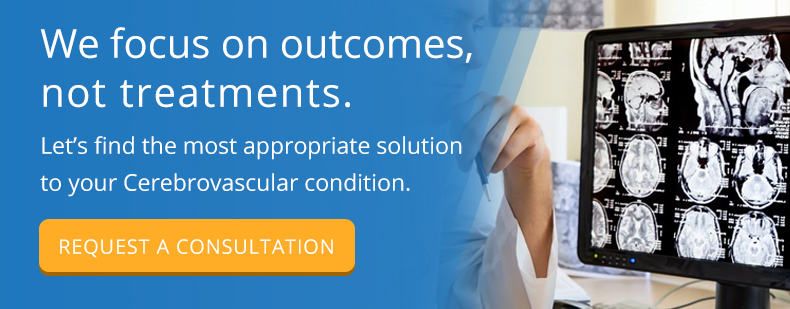An aneurysm occurs when the wall of an artery in the brain develops a weak spot and balloons outward, creating a sac. Instead of flowing normally through the artery, blood enters the aneurysm sac instead. Many people have aneurysms that are never diagnosed or that remain small and stable for a lifetime. But in some cases, aneurysms can enlarge, leak blood or rupture – a potentially life-threatening medical emergency.
What Happens When an Aneurysm Ruptures?
An aneurysm ruptures when the weakened walls of the aneurysm sac become too thin and burst open, causing bleeding into the subarachnoid space, the space between the brain and the tissues surrounding it. This is a serious event called a subarachnoid hemorrhage, and it can lead to hemorrhagic stroke.
Symptoms of an Aneurysm Rupture
Depending on the location of the rupture, a ruptured aneurysm can cause a variety of symptoms, but the signature symptom is a sudden, severe headache often described as the worst headache in a person’s life. Other symptoms include:
- Nausea and vomiting
- Dizziness
- Problems with balance and coordination
- Weakness and numbness, especially on one side of the body
- Blurry or double vision
- Difficulty speaking
- Dilated pupils
- A change in mental status, such as confusion or disorientation
- Loss of consciousness
Risk of Rupture
Not all aneurysms are equally at risk for rupture. Larger aneurysms, or aneurysms that enlarge, may have a greater risk of rupture.
Some health and lifestyle factors can also raise the risk of rupture. High blood pressure can contribute to an aneurysm rupture in addition to situations that raise blood pressure, such as smoking, intense lifting or straining or experiencing extreme stress or anger.
Other factors include alcohol, some medications and the use of stimulant drugs such as cocaine or methamphetamines. Heredity plays a role, too. Some genetic disorders create a predisposition to aneurysms, and if other family members have experienced a rupture, the risk increases.
Treatment Options for Ruptured Aneurysms
Depending on circumstances such as the size and configuration of the aneurysm and the extent of the rupture, treatment options for a ruptured aneurysm include both open surgery and less invasive endovascular procedures.
Clipping Surgery
Once a patient with a ruptured aneurysm has been stabilized, neurosurgeons might choose to perform clipping surgery to close the aneurysm and prevent further bleeding. Clipping is an open surgery procedure that requires a craniotomy to open the skull and access the aneurysm. At the aneurysm site, neurosurgeons place a metal clip across the neck of the aneurysm to block the flow of blood into the ruptured aneurysm sac. Once the clip is in place, the skull portion is replaced and the incision is closed.
After clipping surgery, a patient with a ruptured aneurysm can expect to remain in the hospital for several weeks while doctors monitor recovery from the surgery and address any neurological damage or other issues caused by the rupture.
Aneurysm Coiling
Coiling blocks the flow of blood into a ruptured aneurysm by filling the aneurysm sac with coils of fine platinum wire that are introduced into the aneurysm through a catheter inserted into a small incision in the femoral artery in the groin. Once the coils are in place, the catheter is withdrawn and the incision is closed.
Coiling can also be done in conjunction with other procedures, such as placing a stent into the artery for support, or bypass procedures in which a portion of healthy artery is used to route the flow of blood around the diseased or damaged area. Someone with a ruptured aneurysm can expect to remain in the hospital for two or more weeks after a coiling procedure for monitoring.
Is There Any Way to Prevent Aneurysm Rupture?
Aneurysms can go undetected for a lifetime, and many are diagnosed in the course of testing for another condition. In some cases, doctors may opt to monitor a small aneurysm or prescribe medications to treat symptoms that it causes, but treating an unruptured aneurysm with clipping, coiling or pipeline embolization can prevent a rupture for a majority of people with aneurysms.
Although many factors can contribute to the development of an aneurysm, taking steps to reduce known risk factors such as hypertension, or stimulant use can also help reduce the risk of a rupture. For that reason, doctors may recommend lifestyle changes such as losing weight, stopping smoking and managing stress as part of a plan for treating an unruptured aneurysm.
A ruptured aneurysm can cause death or neurological problems that can last a lifetime, but prompt treatment can save lives. If you’ve been diagnosed with an aneurysm, your doctors will work with you to create the best treatment plan for your individual circumstances.


